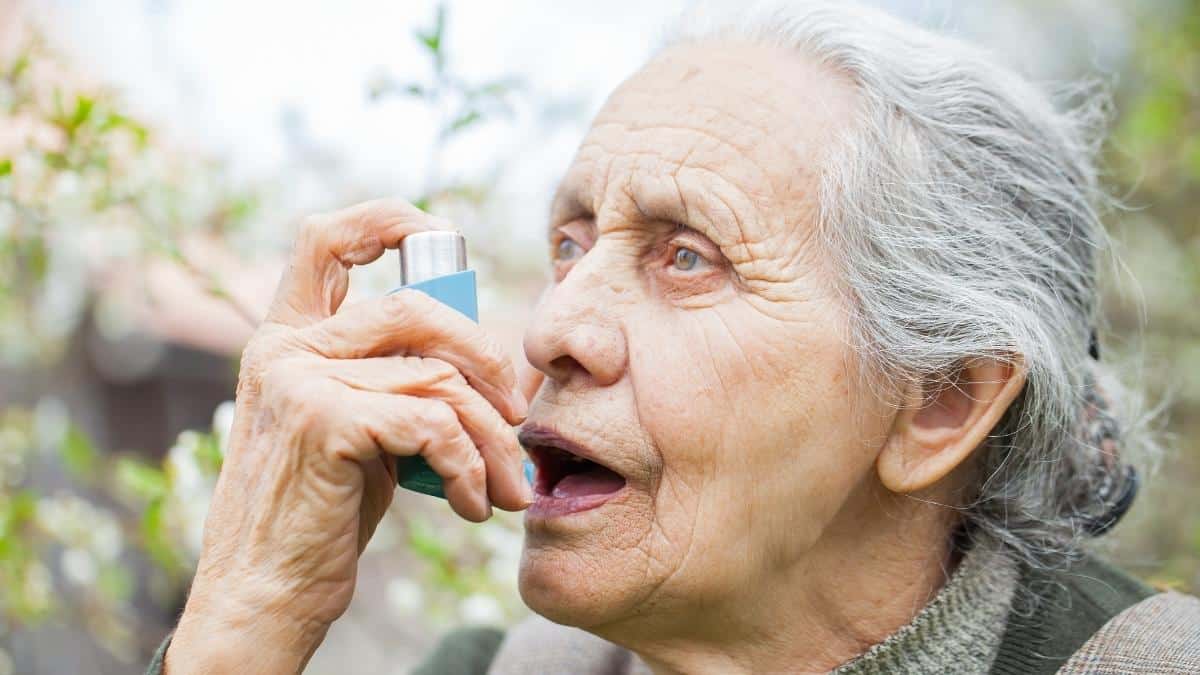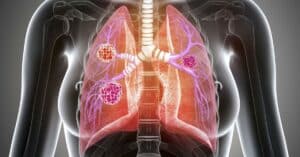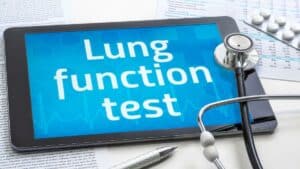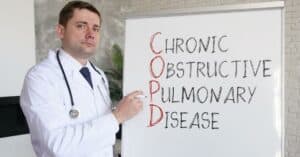Chronic obstructive pulmonary disease (COPD), emphysema and chronic bronchitis are types of chronic lung diseases. Doctors often place chronic lung disease into stages.
Categorizing chronic lung disease in stages helps doctors understand the severity of symptoms. There are four total stages of chronic lung diseases. The stages range from stage 1 or mild stage to very severe or end-stage lung disease.
Lung disease affects people differently and at varying rates of progression. For some people, lung disease progresses rapidly, and for others, it progresses slowly over time.
It’s normal to feel anxious or worried if your doctor tells you that you have end-stage lung disease. However, it’s important to understand what your doctor means as well.
In this article, we’ll breakdown what it means when you have end-stage lung disease.
What are the Stages of Lung Disease?
As we stated earlier, there are four total stages of lung disease. As lung disease progresses, the stage will increase to reflect the severity of your symptoms. The Global Initiative for Chronic Obstructive Lung Disease (GOLD) developed a staging system.
In the GOLD system, the forced expiratory volume in one second (FEV1) measurement from a pulmonary function test (PFT) helps doctors categorize chronic lung disease.
FEV1 means the amount of air you can forcefully exhale in one second. As the lung disease progresses, people have more difficulty forcefully exhaling air because of airflow limitations.
Stages of Chronic Lung Disease:
- Mild or stage 1 with a FEV1 about 80 percent or more of normal
- Moderate or stage 2 with a FEV1 between 50 and 80 percent of normal
- Severe or stage 3 with a FEV1 between 30 and 50 percent of normal
- Very severe or stage 4 (also known as end-stage lung disease) with a lower FEV1 than stage 3, or those with stage 3 FEV1 and low blood oxygen levels.
End-Stage Lung Disease
End-stage lung disease or stage 4 describes the most severe form of lung disease. With a diagnosis of end-stage lung disease, people often have noticeable symptoms, including increased shortness of breath, coughing, wheezing and production of mucus.
People with end-stage lung disease often have significant airflow limitations. Even simple tasks like taking a shower, making the bed and cooking a meal become nearly impossible to do. In addition, people with end-stage lung disease often feel exhausted.
Typically, lung function drops to 30 percent or less during end-stage lung disease. Also, many people have low blood oxygen levels.
Remember, the term “end-stage lung disease” is used to describe stage 4 lung disease.
Treatment Options for End-Stage Lung Disease
Chronic lung diseases are progressive diseases and don’t have a cure. However, there are treatment options available. You and your doctor will work together to develop a plan. Because lung disease is progressive, your doctor may modify your treatment plan to better fit your needs over time.
Bronchodilators
Typically, doctors prescribe bronchodilators to help people open and relax their airways. In general, bronchodilators are inhalers, so the medicine goes straight into your lungs.
Bronchodilators come in short-acting and long-acting inhalers that also come in beta-agonist and anticholinergics. Short-acting bronchodilators provide quick relief while long-acting bronchodilators provide long-lasting relief.
- Beta-agonists work to relax tightened muscles in your airways to help make them wider.
- Anticholinergics help prevent the muscles around the airways from tightening and can help clear mucus from the lungs.
Inhaled Steroids and Combination Inhalers
Sometimes, your doctor may prescribe steroids. Steroids help reduce inflammation and help prevent flare-ups. To deliver the steroids directly to the lungs, your doctor may prescribe an inhaled steroid. During a flare-up, your doctor may prescribe an oral steroid.
Certain medications combine two different types of medicine into the same inhaler. These inhalers are called combination inhalers. For example, a combination inhaler may have a bronchodilator and an inhaled steroid.
Antibiotics and Vaccinations
Typically, people with end-stage lung disease have an increased risk of developing an infection or catching a virus, such as pneumonia or the flu. Infections could lead to serious complications or a flare-up.
If you notice a change in your lung health, symptoms or overall health, see your doctor as soon as possible. Your doctor may prescribe antibiotics to help you fight the infection. Depending on the severity of the infection or virus, your doctor may admit you to the hospital.
Reduce your risk of infection by staying up-to-date on your vaccinations and by seeing your doctor regularly even if you’re feeling well. Remember to get your yearly flu vaccine and to ask your doctor about having a pneumonia vaccine.
Lifestyle Modifications
In addition to taking your medications as prescribed by your doctor and seeing your doctor regularly, lifestyle modifications may also help people with end-stage lung disease feel better.
Quitting smoking is one of the most important steps someone with end-stage lung disease can do. Eating a lung-friendly, healthy diet and getting plenty of exercise are also important.
For example, gentle forms of exercise include walking and Tai Chi. These exercises build up strength, may help improve oxygen levels and may help reduce stress. Stress reduction promotes relaxation, and relaxation can help make it easier to breathe.
A healthy diet for someone with end-stage lung disease may include lean protein like grilled chicken or shrimp, fresh fruit like oranges that are rich in vitamins and dairy-free almond milk that is fortified with vitamins and calcium.
These lifestyle changes may have a great impact on how you feel.
Oxygen Therapy
Oxygen is essential to a properly functioning body, and all cells, organs and tissues need oxygen. However, many people with end-stage lung disease have trouble maintaining adequate oxygen levels. To help people receive enough oxygen, doctors often prescribe oxygen therapy.

Christine Kingsley, APRN is the Health and Wellness Director at the Lung Institute where she focuses on providing helpful online resources for people looking for information on various lung diseases, breathing exercises, and healthy lifestyle choices. She advocates for holistic care that involves working with your doctor to explore all options including traditional and alternative care while focusing on diet and exercise as proactive measures.









